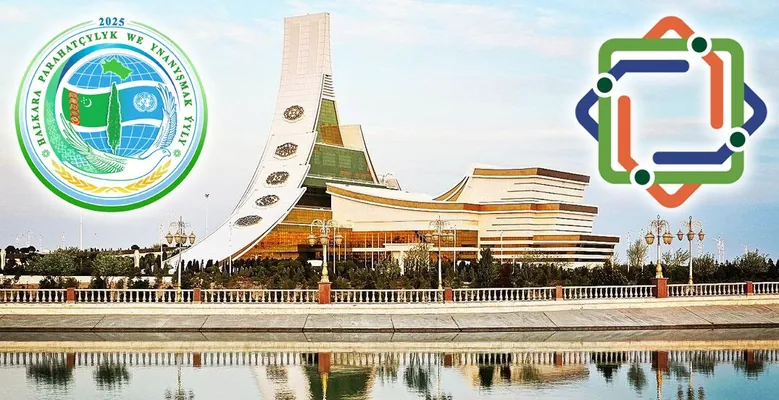Playlist


Turkmenistan to Share Experience in Overcoming Geographic Constraints at LLDC3
Landlocked countries face serious challenges in trade, logistics, and access to global markets. These issues will be at the center of the Third United Nations Conference on Landlocked Developing Countries (LLDC3), which will take place in the coming days in Awaza.
In this context, Turkmenistan will not only act as the host country of the forum, but may serve as an ideal example of how geographic constraints can be overcome and certain progress achieved by utilizing existing potential, notes the newspaper Neutral Turkmenistan.
Our country is consistently developing its transport and logistics infrastructure, creating land-based and multimodal corridors, and actively participating in international projects. Among the key facilities is the Turkmenbashi International Seaport on the Caspian Sea, connecting Central Asia with Europe and Asia by sea, land, and rail. The port has become the largest logistics hub in the region and an important element of sustainable transit. Its total capacity is 17 million tons of cargo per year, including 300,000 passengers, 75,000 freight vehicles, 400,000 TEU (twenty-foot equivalent units), 3 million tons of bulk cargo, and 4 million tons of general cargo excluding oil products.
The use of modern technologies allows Turkmenistan to take a leading position in servicing export and transit cargo flows in the Caspian region.
According to official data, the passenger ferry terminal can simultaneously accommodate four vessels with a deadweight of 5,000 DWT. The unloading/loading of a vehicle from/to a vessel takes 6.5 minutes, including disinfection time. In the general cargo terminal, unloading/loading one big bag (soft container) from/to a vessel takes 1.3 minutes. The container terminal is designed for 400,000 TEU/year. On a 480-meter-long berth, cargo operations can be carried out simultaneously on three ships with cargo of 5,000 DWT. Unloading a container from a ship takes 4 minutes, loading onto a ship – 6.6 minutes, unloading from a truck – 7.5 minutes, and loading onto a truck – 7.5 minutes. In the polypropylene terminal, unloading/loading one pallet (1 ton) of polypropylene from/to a ship takes 2.3 minutes.
Developed networks of roads and railways ensure the efficient delivery of cargo to its destination and the resilience of the logistics chain. In addition to berthing facilities, the port includes numerous onshore infrastructure objects, including transportation: roadways with overpasses totaling nearly 4,000 meters, and about 30,000 meters of railway tracks.
"Located at the crossroads of trade routes along the North–South and East–West axes, Turkmenistan, despite its limited access to major global ports, has actively developed transport and logistics infrastructure and formed new land and multimodal transport-transit corridors. The construction and commissioning of new railways from north to south and from east to west, passing through Turkmenistan, rail and road bridges over the Amu Darya River, high-speed highways, and modern international airports, have allowed our country to significantly expand its transit capabilities," notes the author of the article, Irina Kulieva.
In addition, the country continues its transition to digital procedures, improves regulations, and ensures the resilience of the logistics chain. Turkmenistan promotes transport diplomacy, participates in the drafting of UN resolutions, and contributes to the integration of landlocked countries into the global economy.
Turkmenistan's experience shows that, despite geographical barriers, it is possible to achieve economic growth through investment in transport, expansion of foreign relations, and integration into international logistics networks.
Most viewed


In the Balkan region of Turkmenistan, extensive preparations are underway to celebrate the New Year. With the efforts of the Ministry of Trade and Foreign Economic Relations, the Balkan Regional Consumer Societies Union, and the local branch of the Turkmenistan Industrialists and Entrepreneurs Association, all retail outlets in the region have expanded their festive offerings. Residents and visitors can find a wide variety of food, industrial goods, and gift items.
Markets are adorned with fresh produce, sparkling globes, garlands, toys, candles, Christmas trees, and other gifts that capture the festive spirit. Modern greenhouses in Gyzylarbat, Magtymguly, Bereket districts, as well as in the cities of Balkanabat and Turkmenbashi, supply fresh vegetables and greens for the shelves of mobile trade points. High-quality meat, dairy products, vegetables, and fruits are sold at affordable prices. Beautifully packaged New Year gifts attract considerable interest from buyers.
To meet public demand, the Balkan Regional Consumer Societies Union has opened more than 100 mobile trade points across all districts and cities of the region. These mobile shops will operate until January 3, 2026, according to the «Türkmenistan» newspaper.
Blitz


